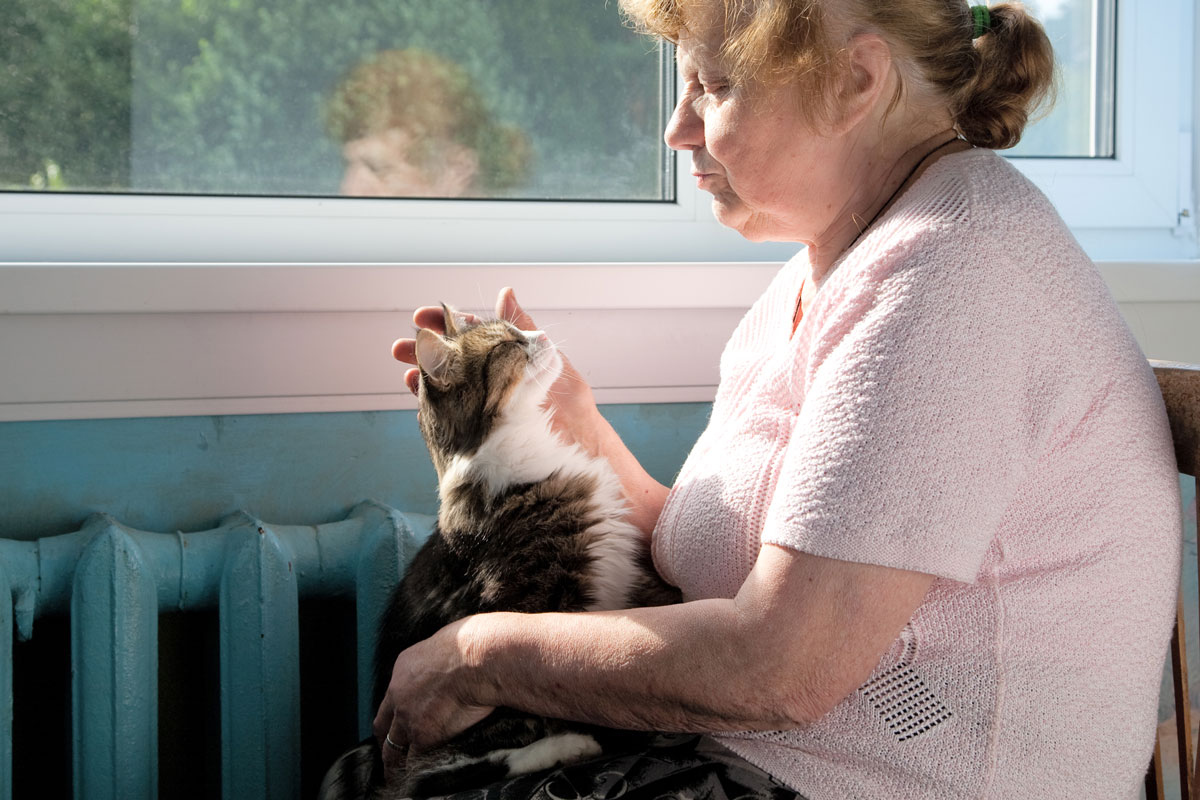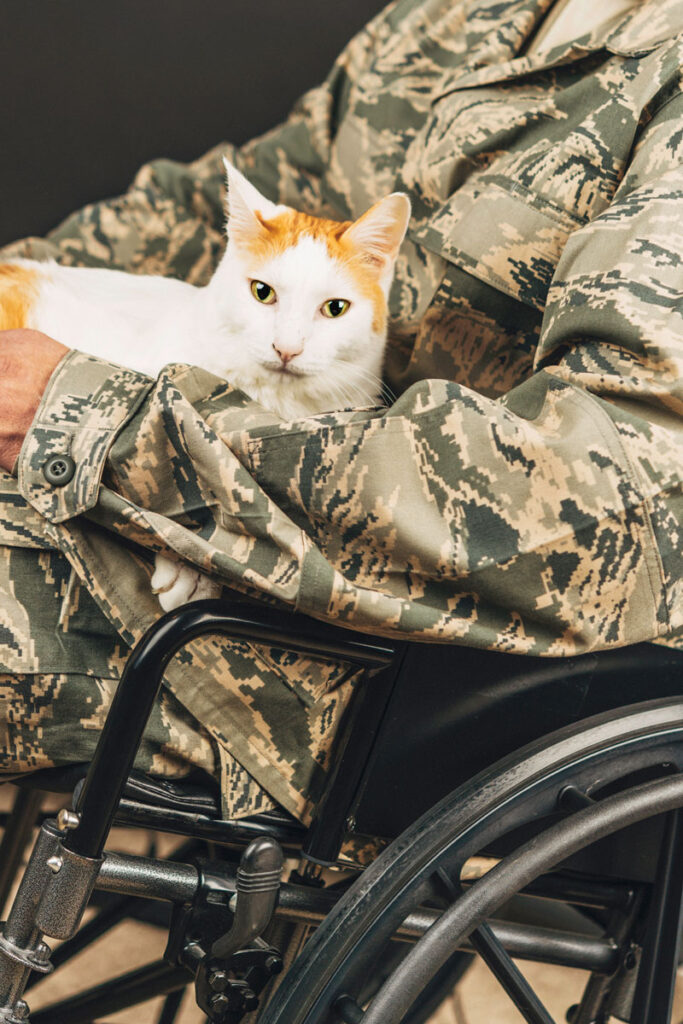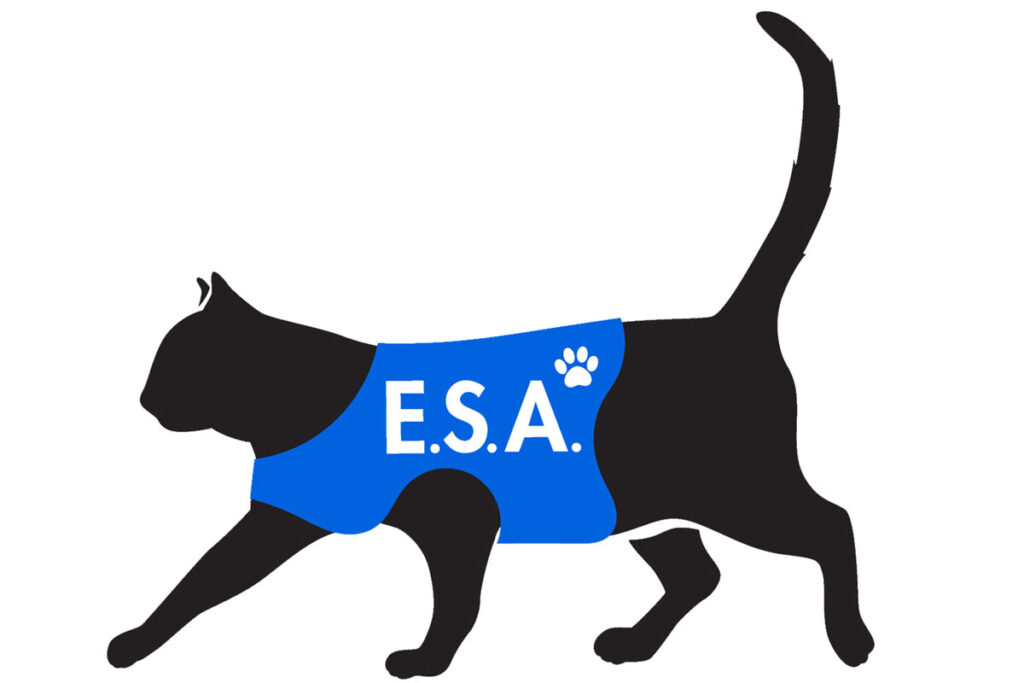Do you have a few chill cats that enjoy lounging around? Ever wondered if your laid-back felines could transition into therapy cats?
It's common knowledge among pet lovers that cats do more than just purr and play - they calm, lower blood pressure, and even help extend our lives.
They're not just pets - they're furry bundles of joy that make waking up each morning worthwhile and add a dose of fun to our lives.

Because of their ability to be calming and comforting, therapy cats can help tremendously in various environments.
Schools, hospitals, elderly homes, and other facilities benefit from the love and comfort that these cats can provide.
So, how does your cuddly friend become a therapy cat? What should you, as a cat owner, anticipate? We've got your questions covered. Let's explore the captivating world of therapy cats together.
Are Cats Effective as Therapy Animals?
Therapy dogs often grace the halls of nursing homes, hospitals, and special needs schools. However, therapy cats, although less common, are frequently in demand.
Activity directors often ask, "Can you bring a cat? James adores cats and it would lift his spirits."
Therapy cats seem to have a sixth sense, intuitively knowing who needs their comforting purr, even when the human touch is not as gentle or steady as before.
Unlike dogs that require obedience and then therapy training, cats follow a different path. They need to adapt to traveling in a crate, interacting with strangers, and navigating unfamiliar environments from an early age.
They must also be comfortable around dogs.
Preparing Your Cat for Therapy Work
Interestingly, cats are less likely to be startled by wheelchairs or IV poles than dogs. Therefore, focus on enhancing your cat's interpersonal skills.
A good starting point is visiting a potential therapy site and getting a feel for the environment. Pay attention to unusual sounds like squeaky PA systems or the clatter of lunch trays on tiled floors.
Expect the unexpected, like leftover party balloons or children visiting their grandmother. In all scenarios, your cat needs to remain calm and comfortable.
How Can My Cat Become A Therapy Cat?
Volunteering your time and your pet is a fantastic contribution to places like hospitals and schools. Therapy cats can help people find their happy place.
But not all cats or owners are cut out for this starring role. If you want your cat to become a therapy cat, you should contact an organization such as Pet Partners or Love on A Leash to see if you and your cat meet some basic requirements.
You and your cat are a team. You'll have to be evaluated by an organization before you and your cat can be certified.
SIGN UP FOR THECATSITE'S EMAIL UPDATES >

Ensuring Your Therapy Cat's Safety
Safety comes first, both for you and your cat. Remember, while the staff at the facilities are responsible for the residents, your priority is your cat. Always ask for accompaniment during visits.
If an accident happens, like a resident falling, don't intervene. Instead, move your cat and yourself out of the way and let the professionals handle the situation.
Always keep your cat in a crate during car rides and consider microchipping them for added safety.
Navigating Visits with Your Therapy Cat
When visiting a nursing home, how do you ensure your cat's safety? Transport Kitty securely in a carrier and ensure all doors and windows at the facility are closed.
If your cat gets startled, you want to be able to retrieve her quickly.
Initially, keep your visits brief - no longer than thirty minutes. As your cat grows accustomed to the environment, you can gradually extend your visits up to an hour.
Remember, your cat's well-being is your primary concern, regardless of the facility's preferences.
Handling Your Therapy Cat during Visits
Residents may want to hold your cat. However, to ensure everyone's safety, it's best for you to hold the cat while they pet her.
Place it on the resident's lap, then place your cat's front paws on the blanket. This way, if your cat jumps, her back claws won't harm the resident.
How Cats Thrive As Emotional Support Animals
Can Cats Detect Your Stress Levels?
Contrary to the stereotype of cats as aloof creatures, experienced cat owners know this isn't the norm. Cats are intuitive animals, capable of reading our moods through facial cues and body language.
They can sense distress or sadness in their humans, often responding in kind to our emotions.

In a study published in the journal Animal Cognition, cats had different responses to their owners when they smiled versus when they frowned.
They exhibited a more positive reaction when their humans were happy. Interestingly, these felines remained indifferent to the facial expressions of strangers, displaying consistent behavior towards them.
The Impact of Human Stress on Cats
Your stress levels significantly influence your cat's well-being. Cats are adept at picking up on our emotions, often even before we're consciously aware of them ourselves.
Read more: How to tell your cat loves you
Can Cats Help Alleviate Anxiety and Depression?
The bond between a cat and its owner is powerful and profound. Like all pet parents, cat owners find happiness in the company of their feline friends.
Our pets are not just animals; they're part of our families, offering us joy and unconditional love.
These furry companions can help dispel feelings of anxiety and depression - a phenomenon the Anxiety and Depression Association of America (ADAA) refers to as "the pet effect."
The Comforting Routine of Cat Ownership
Owning a cat can provide structure and security in our daily lives. They offer emotional support, show interest in our activities, and reward us with positive behaviors such as lap-sitting and purring. These simple actions foster a deep sense of connection, making us feel loved and cared for.
Cats as Emotional Support Animals: Benefits and Legal Protections

An emotional support animal (ESA) provides comfort and support to their owner.
The relationship between a pet and its owner can alleviate anxiety or depression. It's common for dogs to be ESAs.
However, cats are just as capable of providing emotional support. Cats are easy to take care of and don't require a lot of energy or physical ability that some other animals might need.
Cats will give you the genuine affection you need to ease your mental state.
Under the Fair Housing Act and the Air Carrier Access Act, cats as ESAs are protected.
This protection means your cat can live with you anywhere and can fly with you in a carrier in the cabin of an airplane. The US Service Animals organization can guide you through the process of registering your cat as an ESA.
Your cat is there for you to pet and cuddle. It's up to you to decide if you need to register your feline as an ESA.
Keep in mind though if you plan to travel or move to a residence that doesn't allow pets, you'll want to consider registering your cat.
Can Therapy Cats Help People With Autism?
There isn't a lot of research on the topic of therapy cats and people with autism spectrum disorder (ASD).
However, some studies support the relationship between children with ASD and cats as positive. Frontiers in Veterinary Science published a study that revealed cats might be a preferred pet for kids diagnosed with ASD.
In Frontiers' research, families responded that cats were affectionate with their autistic children. In most situations, a child connecting with a pet provides a calming environment.

What's A Therapy Cat Vest?
An ESA cat vest is like a harness but crafted from a soft material designed to sit on your cat's back. The vest secures around your cat's waist, behind the front legs.
These vests usually have a D-ring attached so that a leash can be secured to the vest. According to the online site ESA Doctors, emotional support animals, like cats, aren't required to wear a vest.
That said, here are a few reasons why you should consider outfitting your cat with a therapy vest:
- While in public spaces, you might want to keep your cat on a leash. Vests with D-rings enable you to attach a leash easily.
- When a cat wears a therapy vest, it's a visual indicator for people not to approach. The therapy vest acts as a sign that your cat is a support animal, not just a pet out and about.
- Some vests can are available with patches or straps labeled with "emotional support animal" or "ESA." The printed words are a visual cue for other people to respect your cat's space.
- Some vests have pockets that can hold your cat's identification information as well as your contact information. The vest with your information will help reunite you and your cat if you get separated.
Shopping For A Therapy Vest
When shopping for a vest, make sure that you measure your cat's girth. Vests come in many sizes, and you don't want them to be too tight for your pet.
Here are some excellent product choices to consider for your ESA cat:
Vest with patches and a D-ring
The vest comes in different sizes and colors to suit you and your cat. Three patches are available, including one to identify your cat as an ESA. And the handy D-ring is also there so you can attach a leash with ease.
See this therapy vest on Amazon.
Therapy vests aren't just for dogs
When shopping for a cat therapy vest, you might need to look for those marketed toward dogs.
The vests that fit smaller dogs are a good option for your cat. We recommend you measure the neck and belly girths of your cat before you order.
This vest on Amazon comes in smaller sizes.
Therapy vest patch accessory
You can also find accessories for vests that help identify your cat as an emotional support animal.
This patch features the acronym ESA. It's a removable rubber patch that can attach to any therapy vest.
Click here to find this patch on Amazon.
Therapy vest tag accessory
A metal tag printed with ESA and a medical alert symbol can attach to your cat's vest, harness or leash.

Click here to find this tag on Amazon.
Cats and dogs are the commonly recognized emotional support animals that you will see wearing vests. While therapy vests aren't limited to cats and dogs, the Fair Housing Act and the Air Carrier Access Act might be.
SIGN UP FOR THECATSITE'S EMAIL UPDATES >
Comments? Leave them using the form below. Questions? Please use the cat forums for those!
Note: We may get commissions for purchases made through links on this page.











4 comments on “Therapy Cats – Can Your Cat Become One?”